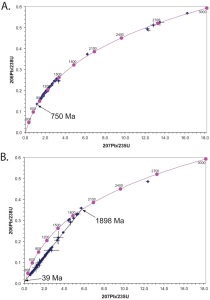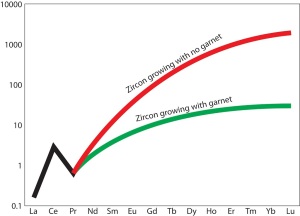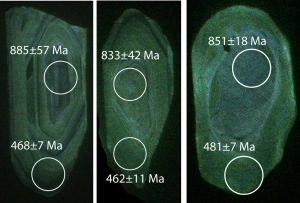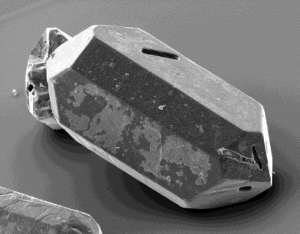 |
| SEM image of zircon crystal (from SDSU) |
Uranium in zircons is useful because over time it decays to lead, thus providing a radiometric clock to tell the age of a particular zircon (and often the rock from which it was extracted). Zircon is particularly useful in U-Pb dating because zircon hates Pb. That is, when the zircon is crystallizing uranium is readily incorporated into the crystal structure, but lead is not. Another thing that makes U-Pb dating so robust is that there are two isotopes of U (235 and 238) that decay to different isotopes of lead (207 and 206). Therefore if the ages of both isotopic systems match then we call it “concordant” or that it lies on the U-Pb concordia (see figure A below). When analyses lie beneath the concordia, this implies there has been some thermal event allowing some of the radiogenic lead to leak out of the crystal lattice (lead loss). Zircons from a sample that experienced lead loss lie on a line known as a ‘discordia’ where the intercept of the discordia and the concordia represent the ages of initial crystallization (upper intercept) and lead loss event (lower intercept) (see figure B below).
Hafnium in zircons is important because it tells us the age at which the material latter to crystalize as a zircon was extracted from the mantle (see below).
And lastly, REE in zircon give us the ability to determine the times at which zircon and other minerals grew in relation to one another. For example, when a zircon grows in the presence of garnet, because garnet will consume the REE more than the zircon and when a zircon grows in the absence of garnet the REE concentrations will be much higher in the zircon. This allows us to decipher the timing at which garnet growth stopped (which is very important for metamorphic petrologists).
Despite all of this analytical mumbo-jumbo, first things first: we must first collect the samples we hope to analyze. The samples are disaggregated and heavy minerals (zircon, apatite, magnetite, etc.) are separated using dense liquids (light mineral such as quartz floats and heavy minerals sink). Magnetic minerals are removed using a powerful magnet and lastly, the zircons are picked by hand using a binocular microscope. Here is the end result:
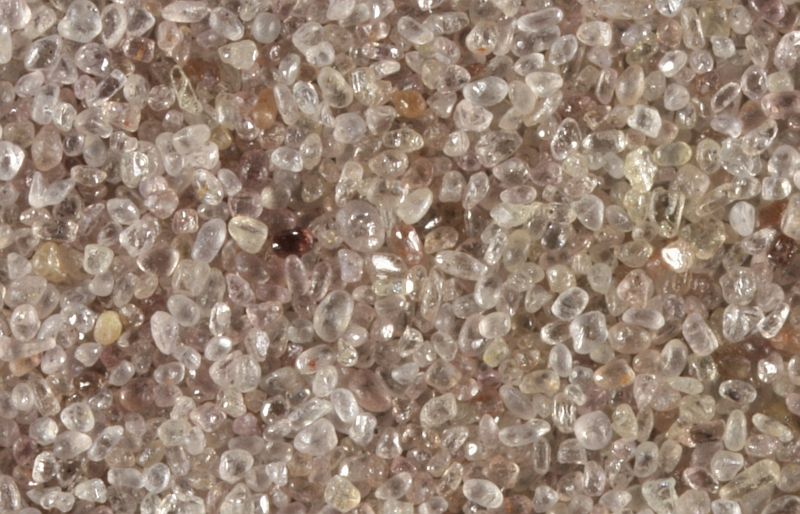 |
| Zircon separate from South Africa (from SandAtlas.org) |
These zircons are then mounted in resin and imaged using backscatter and cathodoluminescence (CL) imaging using an electron microprobe and scanning electron microscope.
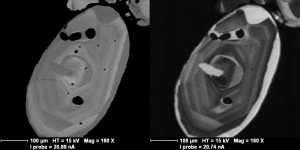 |
| Backscatter (left) and CL (right) images of a zircon extracted from the Torridon Group, Scotland |
See my recent zircon related publications here:
![]() This work is licensed under a Creative Commons Attribution-NonCommercial-ShareAlike 4.0 International License.
This work is licensed under a Creative Commons Attribution-NonCommercial-ShareAlike 4.0 International License.

